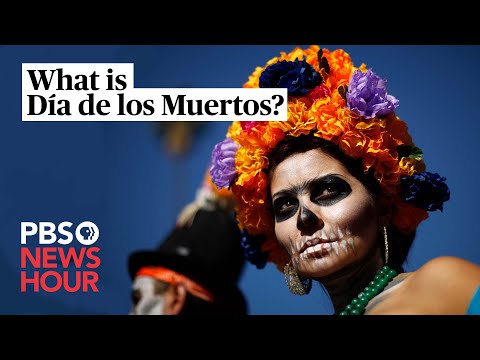
What is Día de los Muertos? An expert explains the holiday celebrating loved ones who have died
On the holiday of Día de los Muertos, or day of the Dead, grief and joy come together in a vibrant display of remembrance. Día de los Muertos becomes the day with which to honor and celebrate the people who you’ve lost and the people who you love, still. Arizona State University’s Matthew Sandoval researches Día de los Muertos celebrated in Mexico and other parts of Latin America each year on November 1st and 2nd. Even though it’s called Day of the Dead, it’s really not a singular day. It’s a series of days generally celebrated on November 1st and
second, which correspond to the Catholic Holy days, All Saints Day and All Souls Day. Día de los Muertos is also the opportunity to honor one’s ancestors. And for Mexicans, Mexican-Americans and Latinos, this usually means like honoring the deep, deep ancestors, the holders of our culture who’ve been able to like, pass this cultural practice down over generations or over the ages that we inherit. The celebrations involve brightly decorated ofrenda or altars covered in orange marigolds. Pictures of loved ones who have died and their favorite things. there really is no like singular traditional ofrenda. But then it’s
also a personal expression for the person who I’m honoring. Like, so my father would want certain things on the altar when
traditional, but growing as acceptance of Día de los Muertos permeates American culture more widely. masquerading as death is not like a very longstanding tradition of the indigenous martyrs. It’s literally like 40 years old. And it’s something that, like Chicanos added to this particular tradition. And so for a lot of Mexican and Mexican-American communities in the United States, they didn’t practice Día de los Muertos in public precisely because it was a way to avoid being discriminated against. It was the performing artists and visual artists in the 60’s and 70’s of the Chicano movement, the Chicano arts
movement specifically, who kind of revived Día de los Muertos and brought it into many communities across California in the Southwest. In the last decade, Sandoval has seen the question of cultural appropriation popping up around the holiday. But he says many people in the community welcome the participation. Mexicans and Latinos, Mexican-Americans make it an open event precisely because we know that Día de los Muertos is also medicine in a very real sense that it allows people to heal and deal with death. Day of the Dead is not the same as Halloween, but Sandoval says the two
autumnal holidays have become linked both in America and in Mexico. Día de los Muertos is starting to become fused with Halloween in really profound ways so that people are celebrating Día de los Muertos, where they may have celebrated Halloween in the past because now this has more cultural significance or just like community significance, These community celebrations are one way to find closure around loss and death to inevitable parts of life. death is filled with pain and in difficulty. The beautiful thing about Día de los Muertos is that it allows that pain and that difficulty to
be transformed through joyous celebration so that it’s not about just sitting in the difficulty of death. It’s about activating that in order to transform it through joyous ruckus celebration, colorful celebration. A celebration meant to honor the past by those who are still in the present. For the PBS NewsHour, I’m Casey Kuhn
